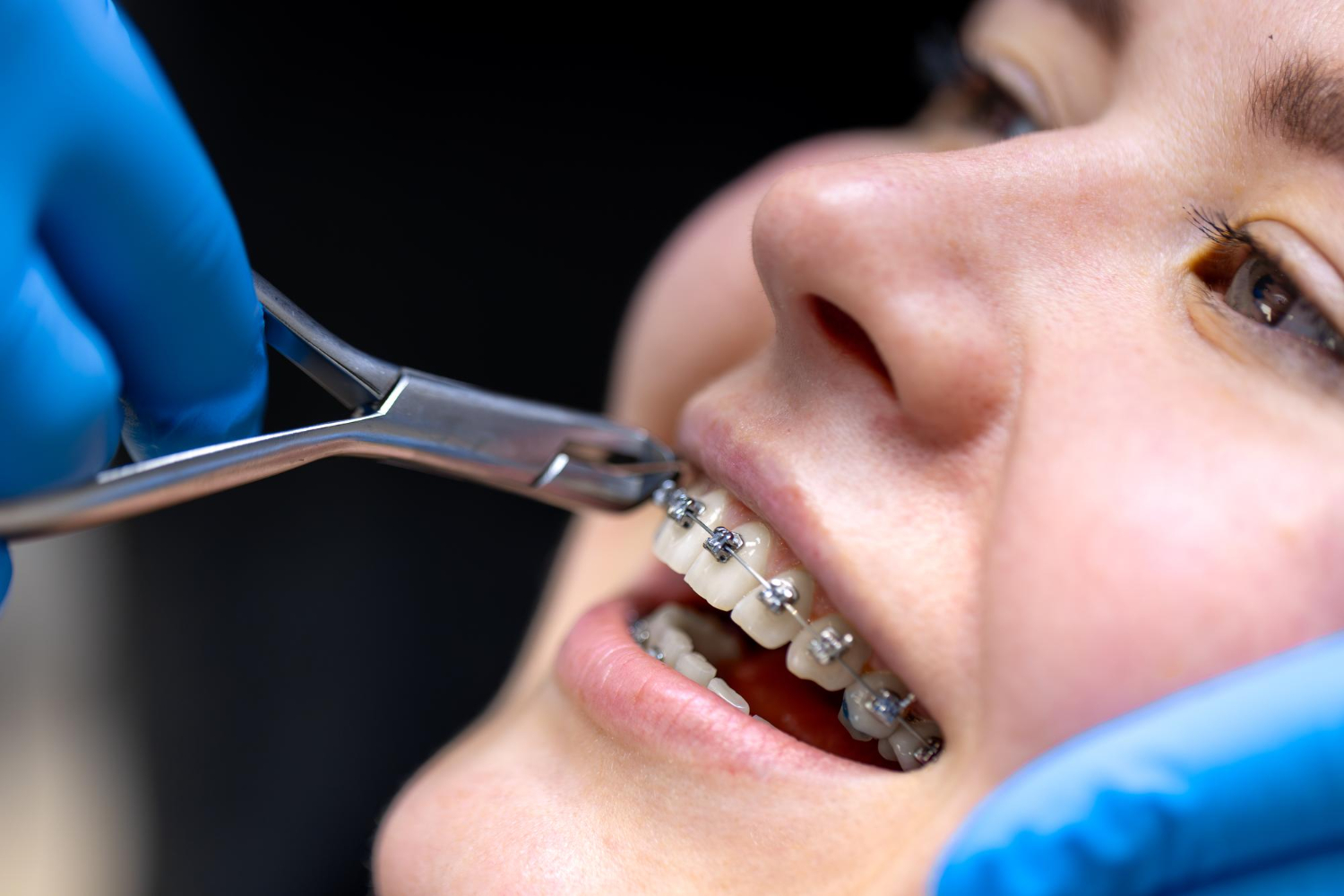If you’ve ever wondered, “how much do braces cost?” in 2025, you’re not alone. Orthodontic treatment is one of the most common dental investments families and individuals consider today. Whether it’s for a child just starting their orthodontic journey, a teenager looking for a confident smile, or an adult finally ready to fix alignment issues, understanding the cost of braces is an essential step in planning.
The price of braces varies widely, but in most cases, the investment is well worth it. Beyond creating a straighter smile, braces also improve bite function, reduce the risk of long-term dental problems, and boost self-esteem. Because braces are not a one-size-fits-all treatment, the cost can differ depending on several factors: the type of braces chosen, the length and complexity of treatment, the orthodontist’s expertise, and whether insurance plays a role.
In this guide, we’ll explore in detail how much braces cost in 2025, break down prices for different types of treatment, explain what influences the total bill, and help you navigate payment and financing options so you can make the best choice for your dental health and budget.
The Average Cost of Braces in 2025
On average, the cost of braces in 2025 falls between $3,000 and $8,000. This broad range reflects differences in treatment needs, orthodontic methods, and the location of the dental practice. Some cases may be on the lower end, especially if they require minimal correction with traditional metal braces. Others may reach the higher end when more advanced or cosmetic options, such as lingual braces or clear aligners, are chosen.
For many families, braces are a significant financial commitment, but they are also one of the most effective long-term dental treatments. Compared with the potential expenses of untreated alignment problems—such as jaw pain, gum disease, or costly restorative procedures—the investment in braces often saves money over time.
Braces Cost With and Without Insurance
Insurance plays a major role in determining how much braces cost out of pocket. Many dental insurance plans now include partial orthodontic coverage, especially for children and teens, although adult coverage is becoming more common as well.
When insurance is included, the average out-of-pocket cost of braces can drop significantly, often landing between $1,000 and $3,000. This happens because most dental insurance policies provide a lifetime maximum benefit for orthodontic treatment, which can cover a large portion of the expense.
Without insurance, patients should expect to pay the full treatment cost, which usually ranges from $4,000 to $8,000 in 2025. However, orthodontists understand that not everyone has insurance and often provide flexible financing options, monthly plans, and discounts to help patients manage the cost.
The key takeaway is this: always review your dental insurance policy before starting treatment. Knowing your coverage can make a big difference in planning and may save you thousands of dollars.
Types of Braces and Their Price Differences
The type of braces chosen is one of the biggest factors in overall cost. Each option has its own advantages, disadvantages, and price point.
- Metal Braces remain the most traditional and affordable option. In 2025, their cost usually falls between $3,000 and $6,000. While they are the most visible, they are also the most durable and effective for complex alignment issues.
- Ceramic Braces are designed to be less noticeable, blending with the natural color of teeth. Their price is slightly higher, averaging $4,000 to $7,000. Patients often choose ceramic braces for cosmetic reasons, especially teenagers and adults who prefer a more discreet look.
- Lingual Braces are placed on the back of the teeth, making them virtually invisible. However, because they require more specialized skill to install and adjust, their cost is significantly higher, often ranging from $8,000 to $10,000 or more.
- Clear Aligners, such as Invisalign, are a popular modern choice. They are removable, comfortable, and nearly invisible. The cost of clear aligners in 2025 ranges from $3,500 to $7,500, depending on how many sets are needed and the length of treatment.
Your choice will likely depend on your lifestyle, budget, and orthodontist’s recommendation.
Factors That Influence the Cost of Braces
Several important factors determine how much braces cost:
- Severity of dental issues: More complex cases require longer treatment times, additional adjustments, and sometimes extra procedures like tooth extractions, all of which increase the cost.
- Type of braces: As outlined above, metal braces are generally the most affordable, while lingual braces are the most expensive.
- Location of the practice: Orthodontic offices in large cities or high-demand areas often charge more than practices in smaller towns.
- Orthodontist’s experience: A highly skilled orthodontist with years of expertise may charge higher fees, but this often ensures more efficient and precise results.
- Additional treatments: X-rays, retainers, follow-up appointments, and other services may be billed separately, raising the total cost.
Understanding these variables allows patients to better anticipate their expenses and avoid surprises.
How Much Do Braces Cost for Different Age Groups?
Age can also affect the price of braces. For children, costs are often partially covered by insurance, and early treatment can sometimes prevent more complex issues later. The average cost for children’s braces usually falls between $3,000 and $6,000.
For teenagers, braces remain very common. With insurance, out-of-pocket costs are usually between $1,000 and $3,000. Without coverage, the price often mirrors the general range of $3,000 to $6,000.
Adults may face slightly higher costs, especially if they opt for ceramic braces, lingual braces, or clear aligners. The average cost for adults without insurance often ranges from $4,000 to $8,000, depending on the chosen treatment and case complexity.
Monthly Payment Plans and Financing Options
For many families, paying for braces all at once isn’t realistic. That’s why most orthodontists offer monthly payment plans. In 2025, the typical monthly cost of braces ranges from $100 to $250, depending on the total price and the length of treatment.
Some offices provide interest-free financing, while others partner with third-party lenders. Additionally, patients may use tax-free accounts like HSAs (Health Savings Accounts) and FSAs (Flexible Spending Accounts) to cover part of the expense, reducing the financial burden.
These options make braces more accessible, allowing families to budget treatment over time.
Ways to Make Braces More Affordable
Even without full insurance coverage, there are ways to reduce the cost of braces:
- Comparing quotes from multiple orthodontists can help you find the best value.
- Choosing traditional metal braces instead of more expensive options can save thousands.
- Asking about in-house discounts or family packages may provide additional savings.
- Using HSAs or FSAs for orthodontic care ensures you pay with pre-tax dollars.
- Beginning treatment earlier can sometimes prevent longer and more expensive corrections in the future.
Patients should also ask about special promotions or membership plans that orthodontic practices may offer.
Braces vs. Clear Aligners: Which Costs More?
When comparing traditional braces and clear aligners, the difference in cost often comes down to complexity and convenience.
Metal braces are usually the most affordable, averaging $3,000 to $6,000, while clear aligners range from $3,500 to $7,500. Ceramic braces typically fall in between, while lingual braces are the highest-priced option.
While clear aligners may cost slightly more, they offer the advantage of removability and invisibility, which appeals to many adults and professionals. For complex dental issues, however, traditional braces may remain the more cost-effective choice.
Long-Term Value of Investing in Braces
While the cost of braces may seem high at first, the long-term benefits make it a worthwhile investment. Braces don’t just create a straighter smile; they improve overall oral health by reducing the risk of tooth decay, gum disease, jaw pain, and uneven wear.
The confidence gained from a healthy, aligned smile can also positively affect personal and professional life. For many patients, these long-term rewards far outweigh the initial expense, making braces a smart investment in both health and happiness.
Conclusion
So, how much do braces cost in 2025? The answer depends on your treatment type, age, insurance coverage, and the complexity of your case. On average, patients can expect to pay between $3,000 and $8,000, with lower out-of-pocket expenses for those with insurance.
From traditional metal braces to modern clear aligners, there’s an option for every lifestyle and budget. With flexible payment plans, tax-free savings accounts, and in-office discounts, braces are more accessible than ever.
Investing in braces is about more than just straightening teeth. It’s about protecting long-term oral health, preventing future dental problems, and boosting confidence. If you’re considering braces in 2025, now is the time to explore your options, ask questions, and plan confidently for a healthier, brighter smile.
My name is Mustafa, and I have been blogging for over 5 years. I am passionate about sharing complete, accurate, and helpful information with my readers. Along with managing content on The Matcha Read, I also contribute blog posts to premium websites. My goal is to provide valuable insights in a clear and easy-to-understand way, so every reader walks away with useful knowledge.










